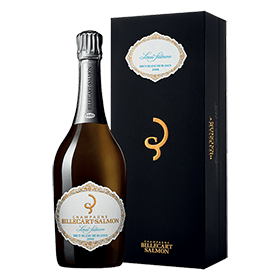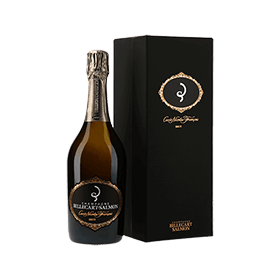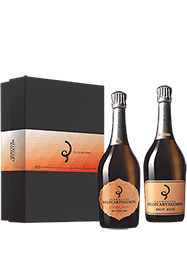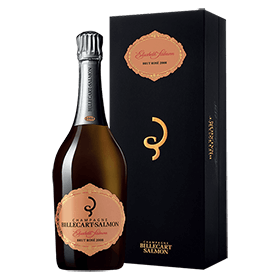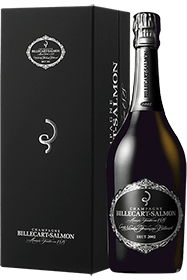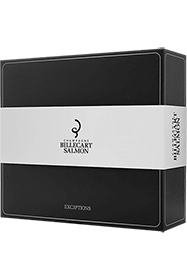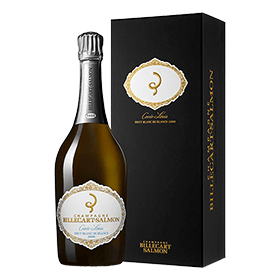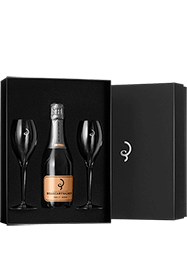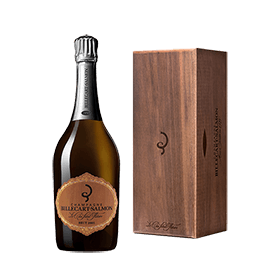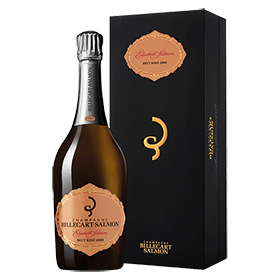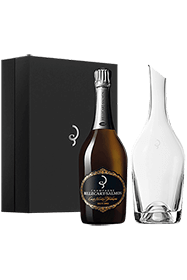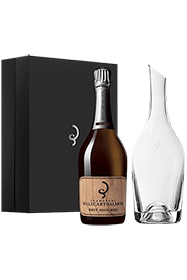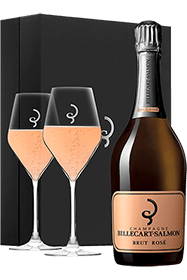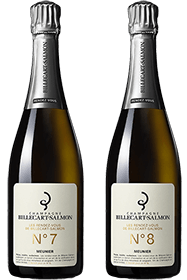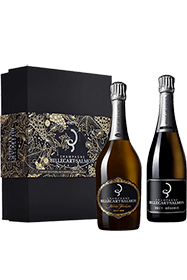Founded in 1818 by Elisabeth Salmon and Nicolas-François Billecart, the House of Billecart-Salmon remains independent for seven generations, perpetuating with rigor its know-how and the quest for excellence that shapes its cuvées.
Billecart-Salmon, 200 Years of Adventures in the Rhythm of Champagne
Founded in 1818 by Élisabeth Salmon and Nicolas François Billecart, the House of Billecart-Salmon quickly established itself as a reference in Champagne. Heir to a line of winegrowers since 1545 in Mareuil-sur-Aÿ, Nicolas Billecart immediately perceived the potential of sparkling wines and boldly took on the challenges of their production.
Driven by its rigor and vision, the House of Billecart-Salmon quickly made a name for itself beyond borders, captivating the Imperial Court of Russia and the American market. Today, Billecart-Salmon is more than just a brand; it is a family united by passion and excellence, perpetuating a prestigious heritage. Under the leadership of François and Antoine Roland-Billecart, the sixth generation ensures these values are preserved, while the seventh generation is already preparing to write the next chapter with serenity and commitment.
A Winemaker's Soul and an Exceptional Terroir
Cultivating the soul of its Champagne is the commitment of the House of Billecart-Salmon. Just like in cooking, the best recipe is not enough; excellence relies on the quality of the raw materials. And if great wines are born from great grapes, these come from the best terroirs. Côte des Blancs, Vallée de la Marne, and Montagne de Reims: the identity of Billecart-Salmon's vineyard has been forged in the heart of the Champagne Golden Triangle.
Among the last family-owned Champagne houses, Billecart-Salmon remains, above all, a winemaker. With 100 hectares of its own and nearly 150 hectares under contract, it meticulously oversees its supplies. Preserving and enhancing this heritage is the mission of Denis Blée, the vineyard manager since 1996. His role? To elevate each grape through precision viticulture, accompanying the vine throughout the seasons and favoring massal selection over cloning. Certified Sustainable Viticulture in Champagne since 2017, Billecart-Salmon perpetuates the harmony between terroir and know-how.
A Style Recognizable Among All
Elegance, finesse, vinous character, and aromatic purity: Billecart-Salmon embodies Champagne excellence. Each unique cuvée embodies a style shaped by essential values, where minimal dosage, slow cold fermentation, and wood vinification are the pillars of the Billecart-Salmon style.
A pioneer, Nicolas François Billecart reduced the dosage as early as the 19th century to reveal the authenticity of the terroir. Since 1958, low-temperature fermentation, initiated by Jean Roland-Billecart, gives the wines finesse and freshness. Wood vinification, reintroduced in 1995, brings complexity and depth, supported by an impressive cellar inaugurated in 2017. Faithful to its heritage, Billecart-Salmon relies on the talent of its craftsmen. After 33 years of dedication under the direction of François Domi, Florent Nys continues this quest for excellence with passion.
Exceptional Cuvées with Multiple Expressions
Billecart-Salmon Rosé, Symbol of the House
How can one mention the prestigious property without talking about its emblematic Billecart-Salmon Rosé? A true signature of the House and an unmissable reference among rosés, the Brut Rosé, nicknamed "Pink Bill," has established itself thanks to Jean Roland-Billecart. In 1970, he made it one of the symbols of Billecart-Salmon. With its refined pale pink hue, it captivates both the eye and the palate, offering a brilliant freshness and delicate notes of red fruits.
Brut Réserve and Brut Sous Bois, the Elegance of Wood
A signature of the House, the non-vintage Brut Réserve, partially vinified in barrels, perfectly embodies the style and know-how of the House. As for the Brut Sous Bois cuvée, entirely vinified in wood, it brilliantly illustrates absolute mastery of the art of blending and exceptional know-how.
Vintage, the Vintage Cuvées Signed Billecart-Salmon
The vintage cuvées embody the elegance and harmony of a year that revealed a perfect balance between power and finesse. Composed mainly of Pinot Noirs, enhanced by the delicacy of Chardonnay and a subtle touch of Meunier, these champagnes reveal remarkable complexity and structure.
Cuvées Nicolas François, Louis Salmon, and Elisabeth Salmon, Exceptional Tributes
A tribute to the founder of the house, the Nicolas François cuvée reflects all the know-how of Billecart-Salmon in the art of Champagne aging. The result of a precise blend of Pinot Noir and Chardonnay, these bottles seduce with their depth and aromatic richness.
Dedicated to Louis Salmon, this exceptional blanc de blancs celebrates the purity of Chardonnay. From the finest terroirs of the Côte des Blancs, it combines mineral finesse and crystalline freshness.
The Cuvée Elisabeth Salmon is an exceptional vintage rosé champagne signed Billecart-Salmon, a tribute to its co-founder. Crafted only in the best years, it combines the power of Pinot Noir with the elegance of Chardonnay, enhanced by a touch of red wine from the finest terroirs.
Clos Saint-Hilaire, the Jewel of the House
A true jewel of the Billecart-Salmon house, the Clos Saint-Hilaire is a confidential cuvée, produced in very limited quantities (3,500 to 6,500 numbered bottles). From a single plot of Pinot Noir cultivated biodynamically, this exceptional champagne is entirely vinified in barrels, giving it unique depth and complexity.
Billecart-Salmon in Magnum, Prestigious Formats
Choosing a magnum of Billecart-Salmon means opting for optimal aging, where the slow evolution of the wine preserves its freshness while gaining in complexity. This format enhances the effervescence with finer bubbles and a silky texture. Ideal for special occasions, it brings prestige and conviviality to the service. Highly appreciated by connoisseurs and collectors, it ensures prolonged aging and refined evolution of the House's emblematic cuvées.





